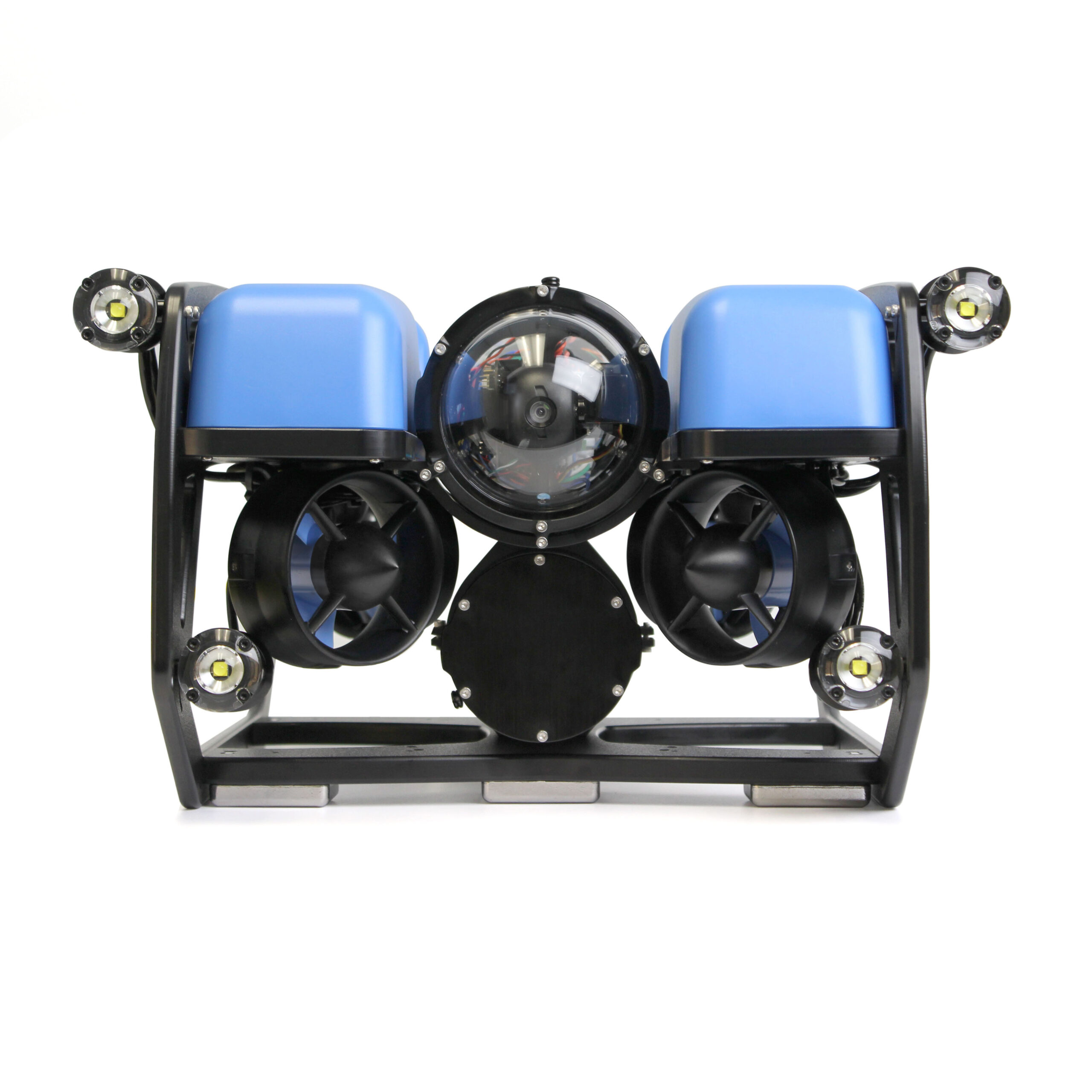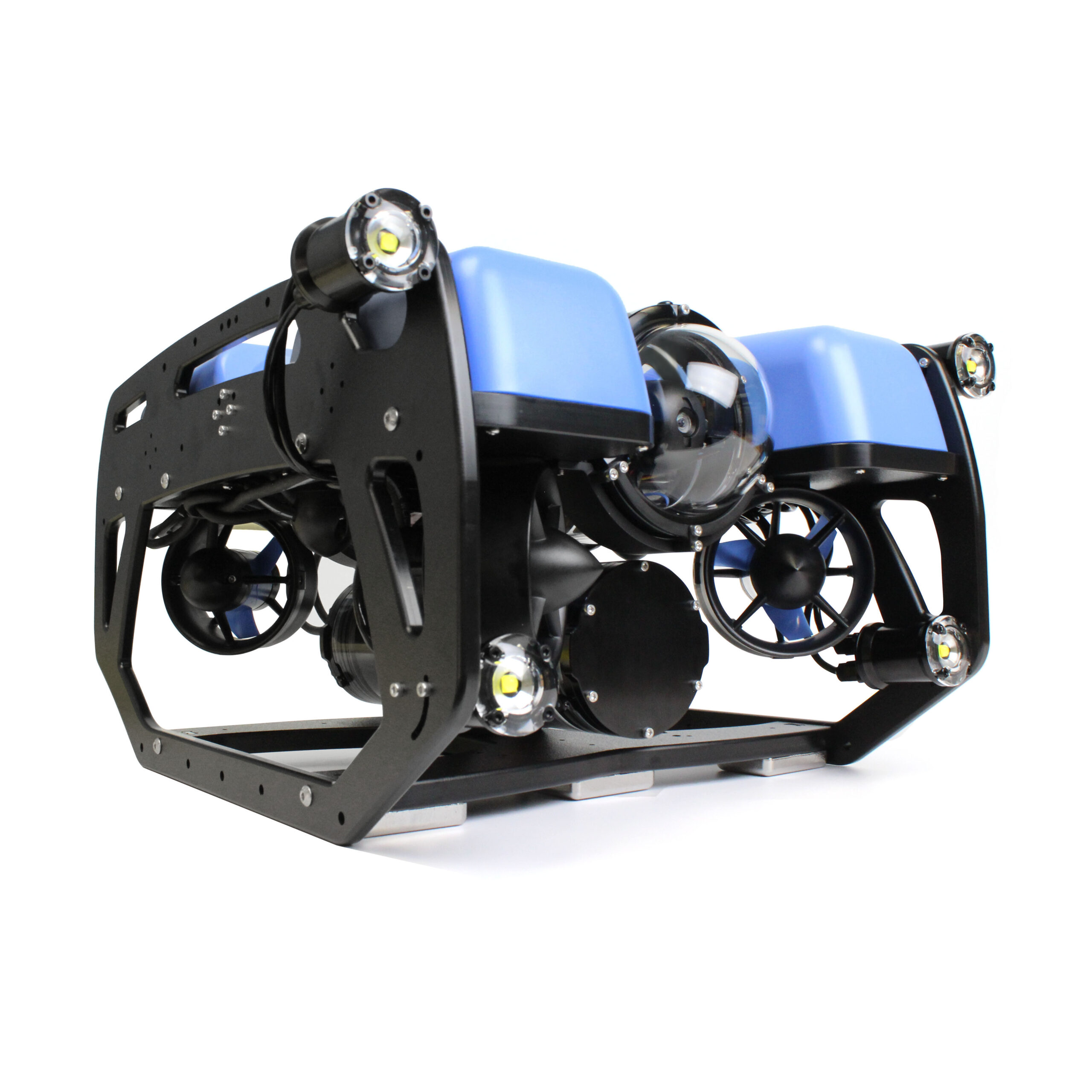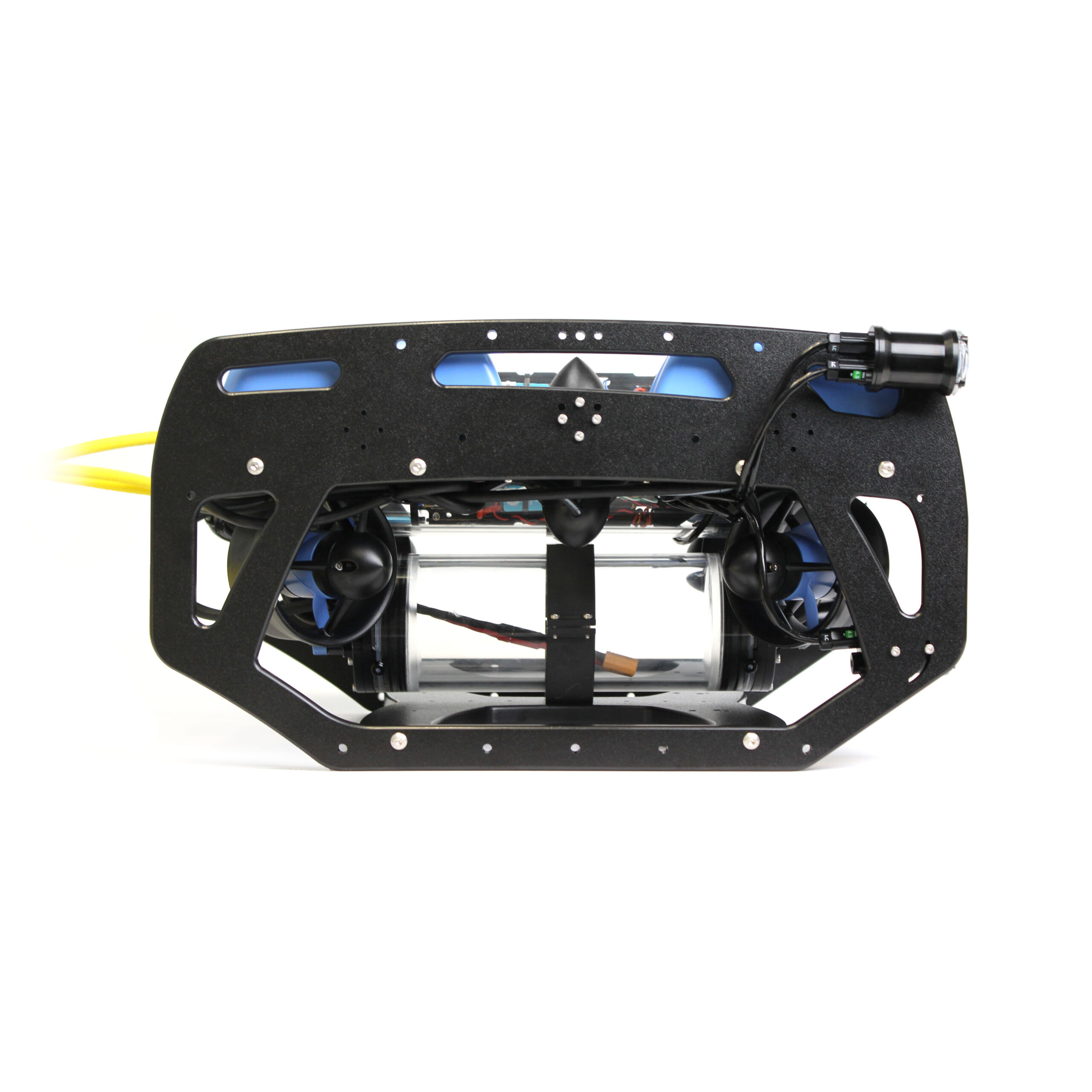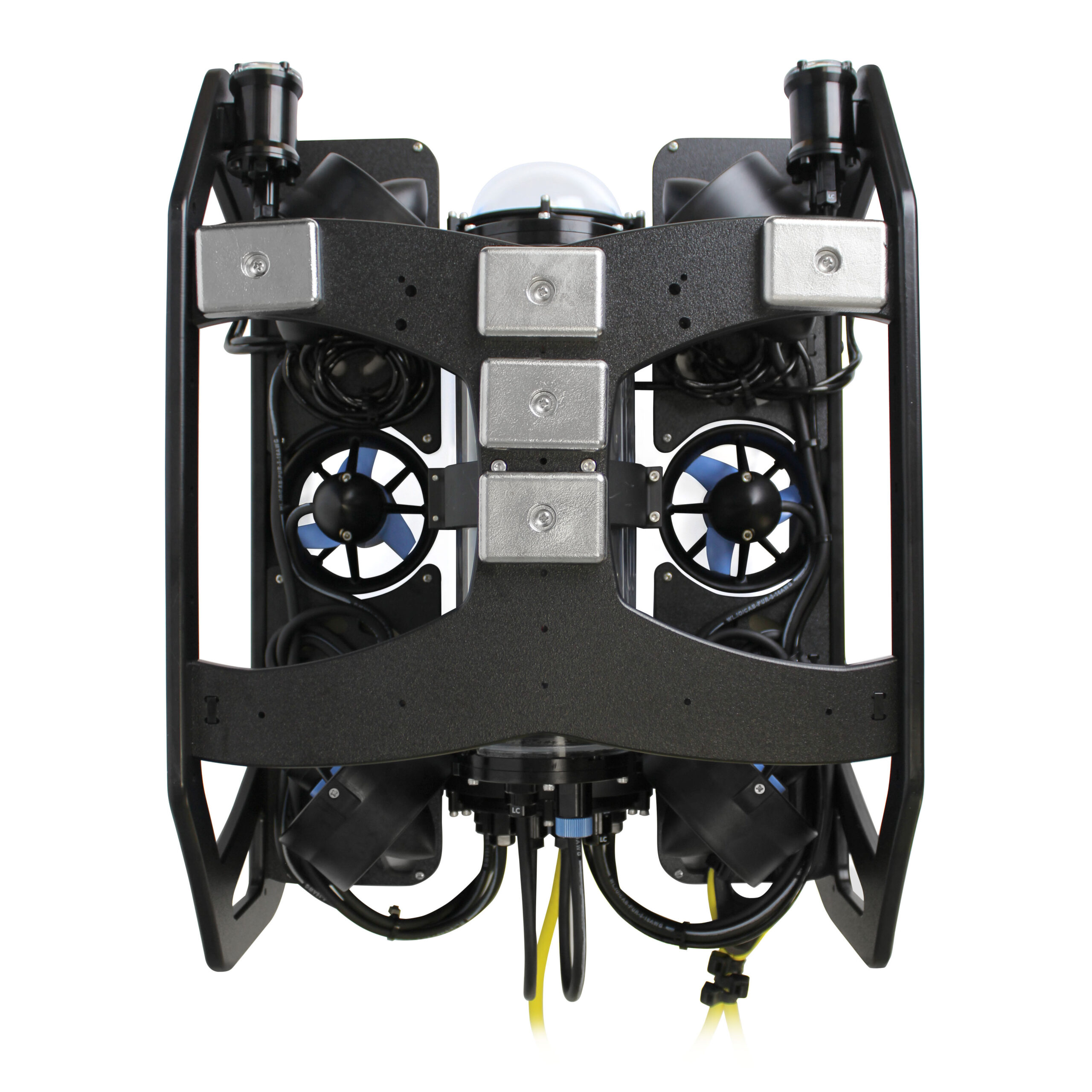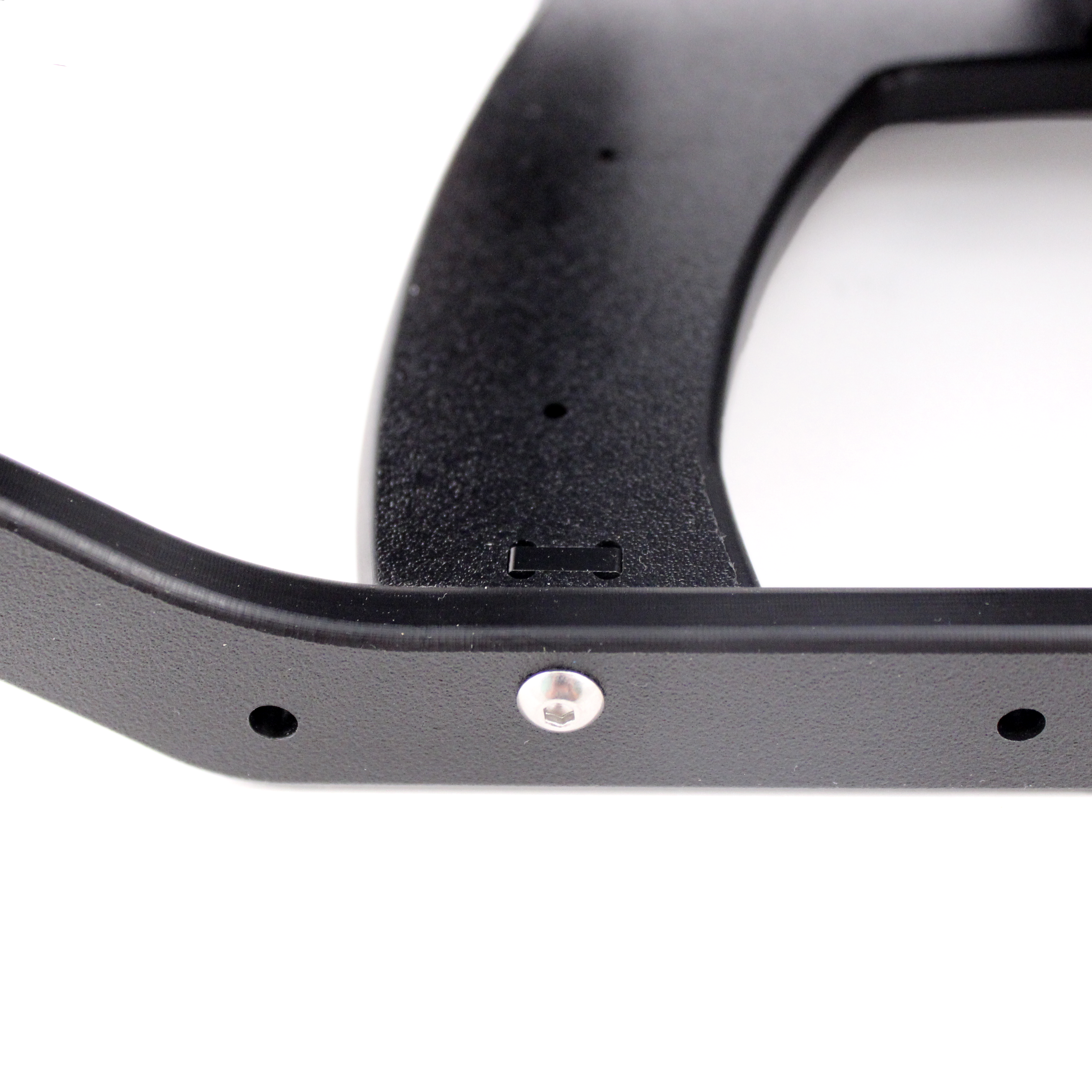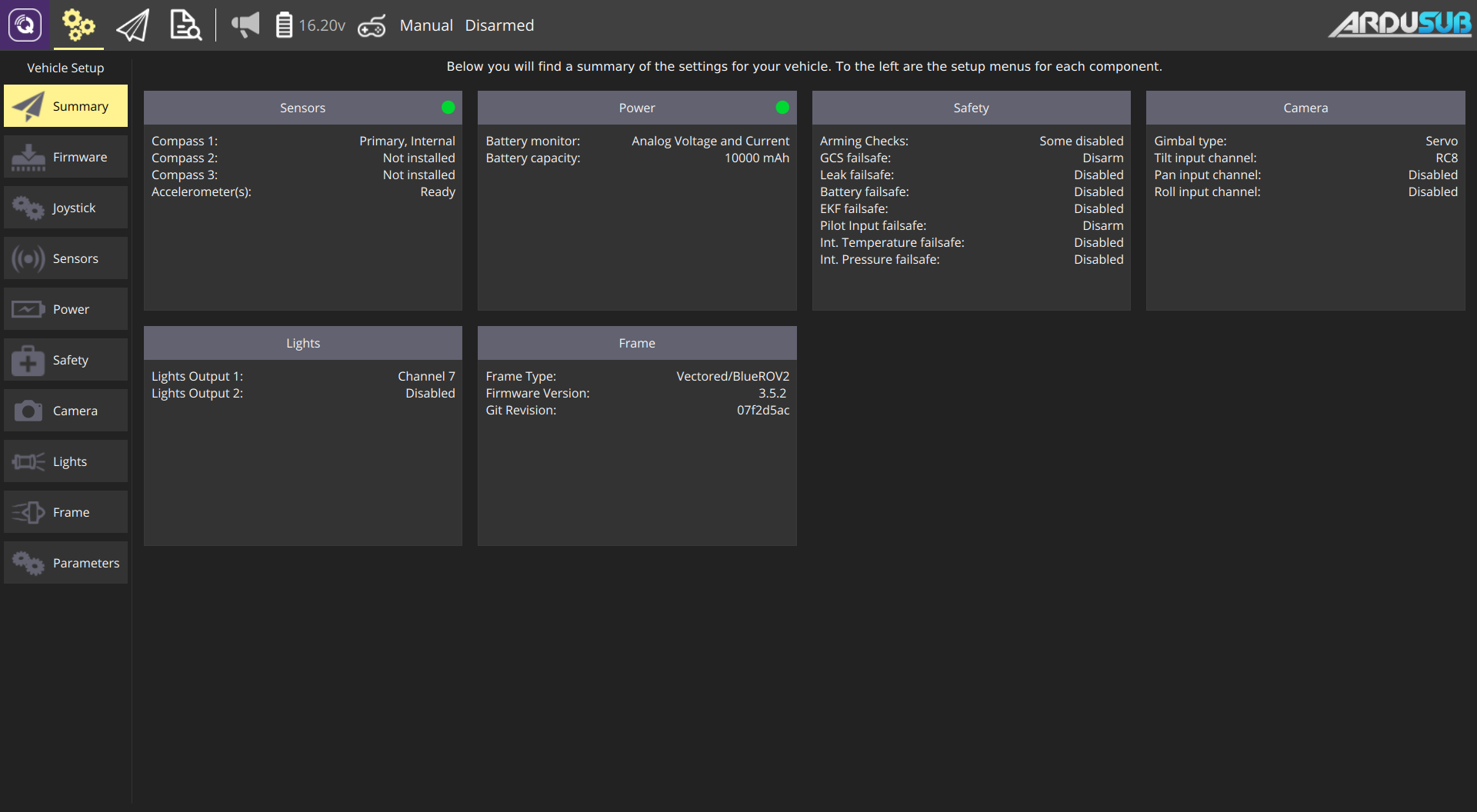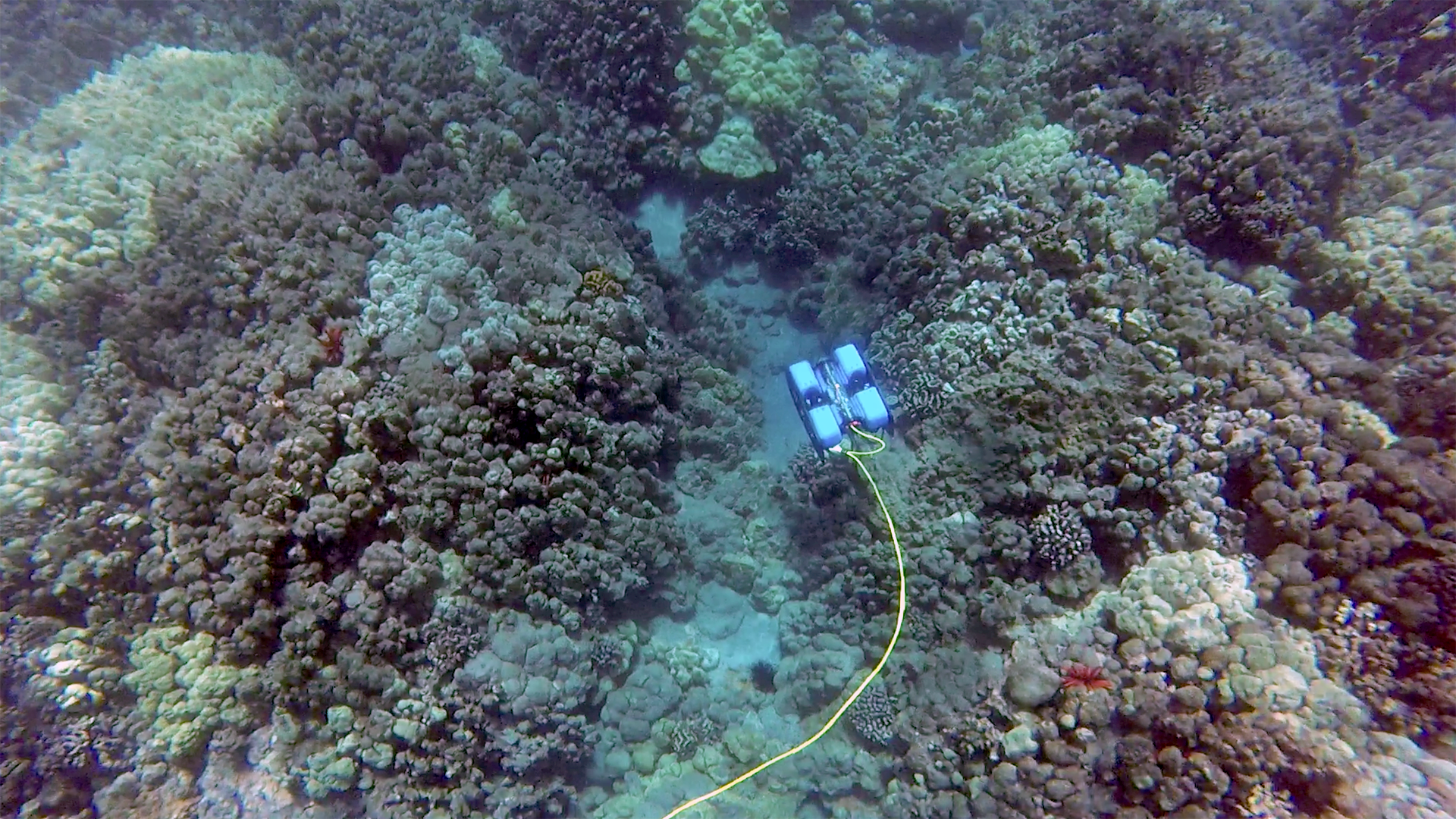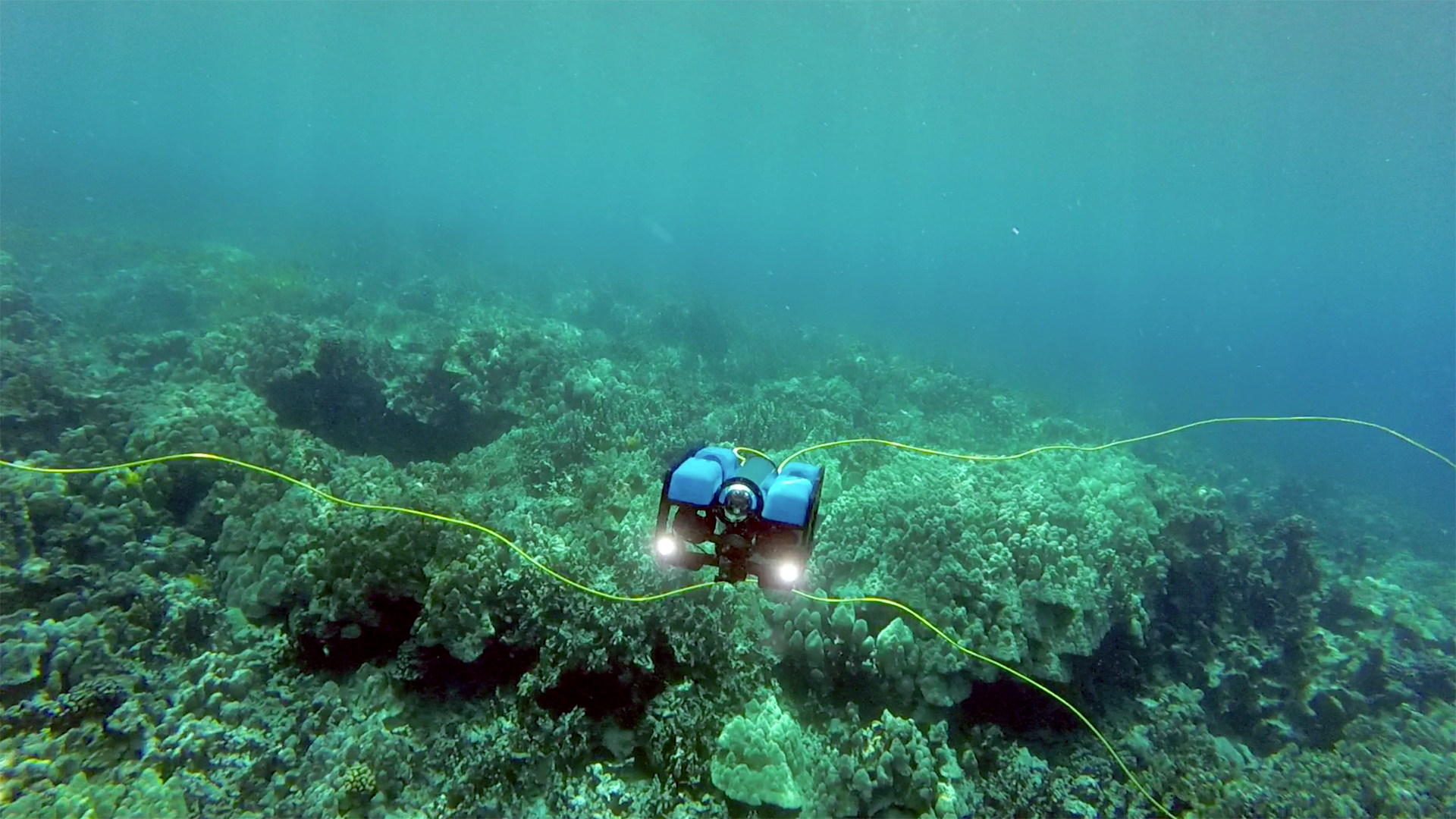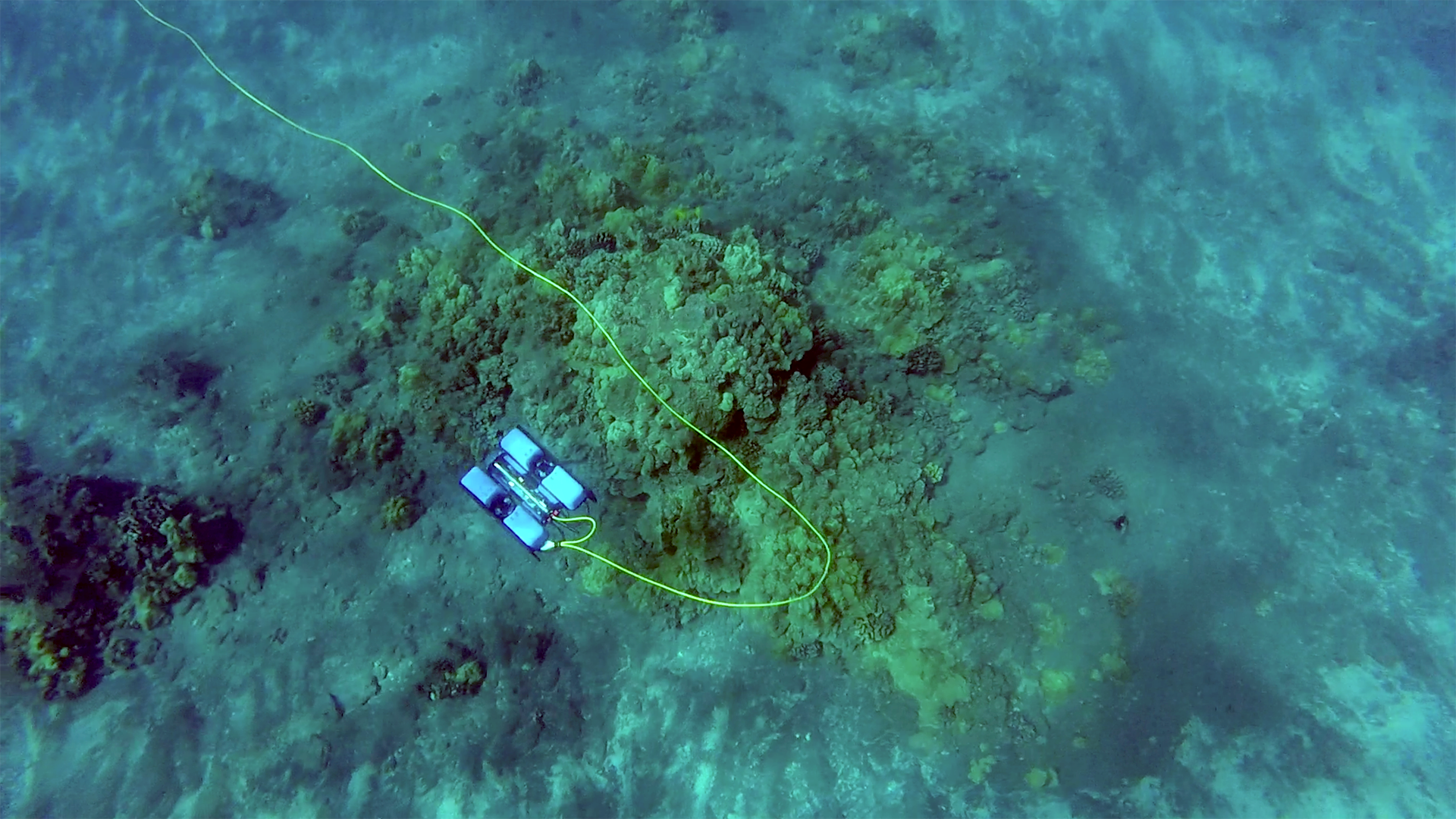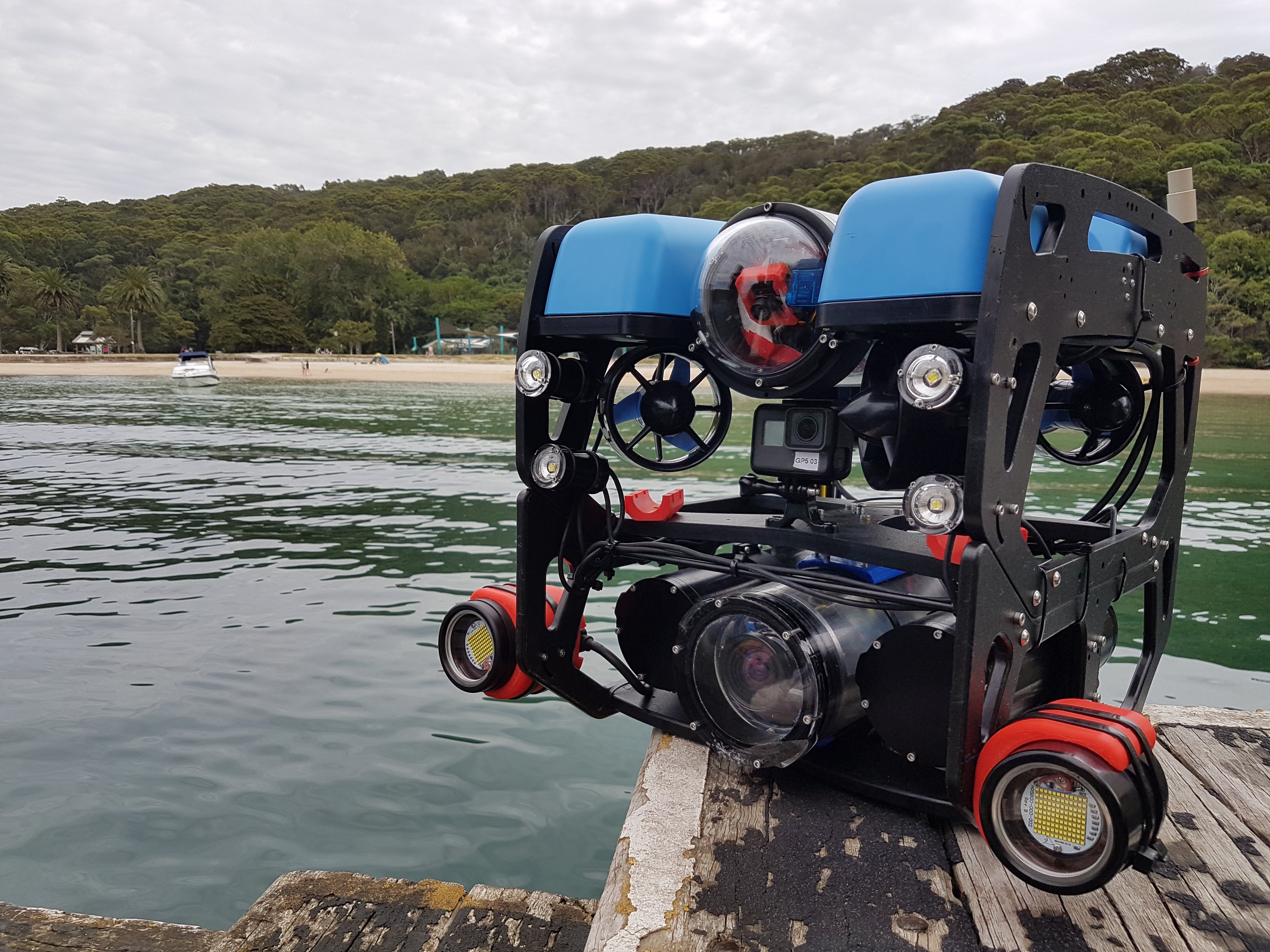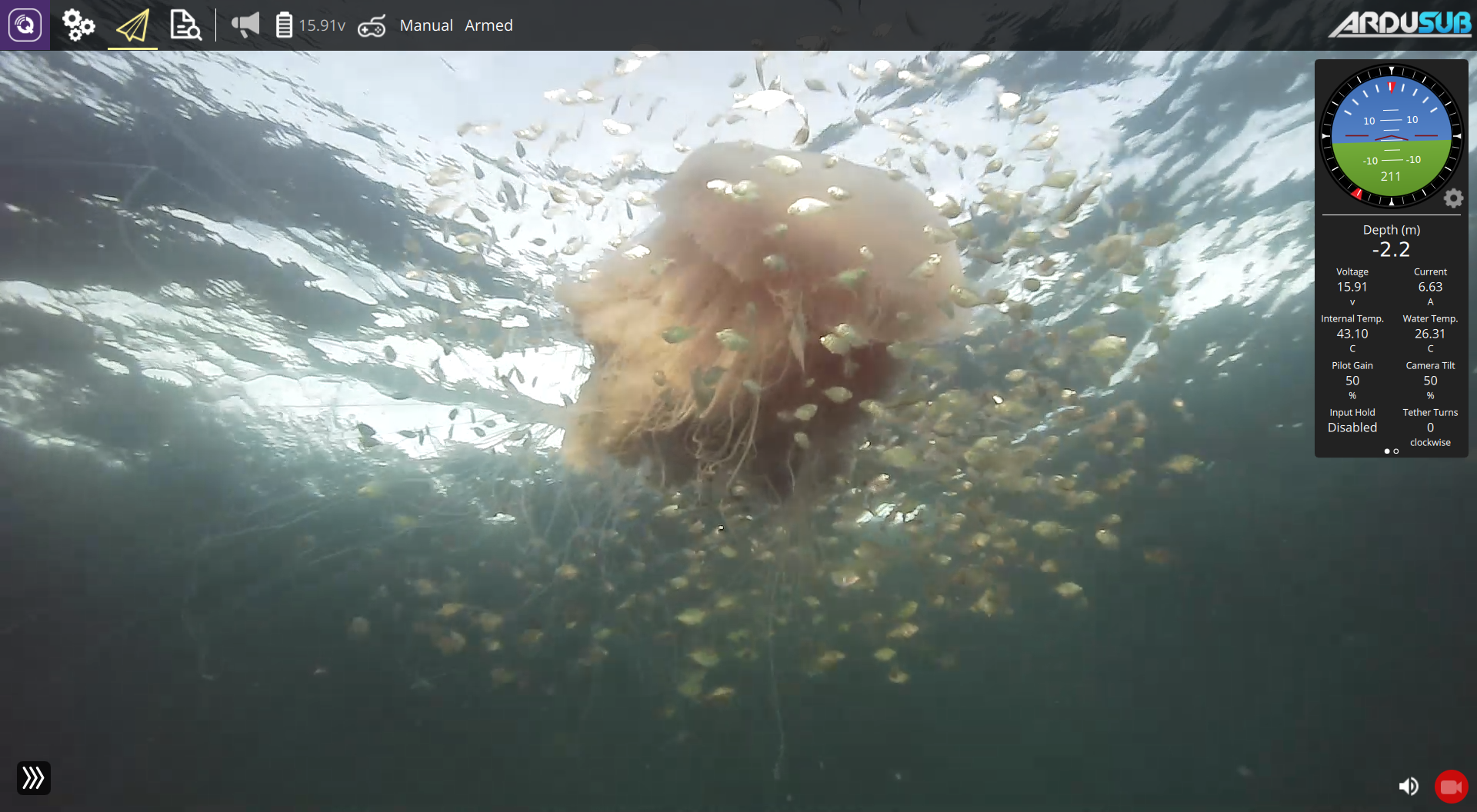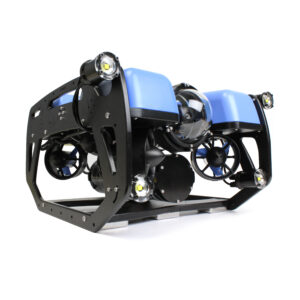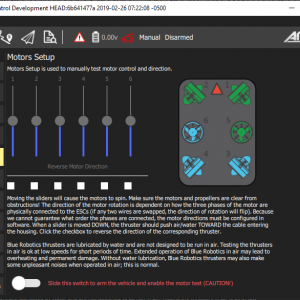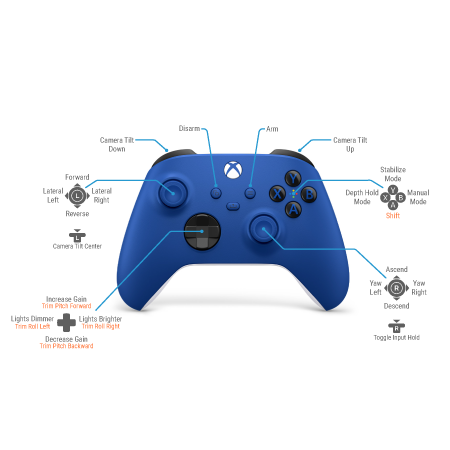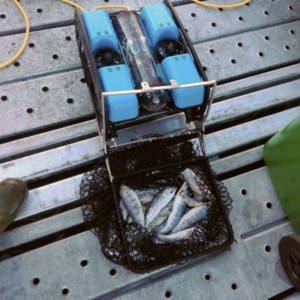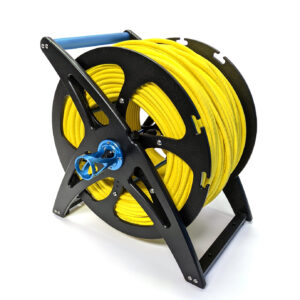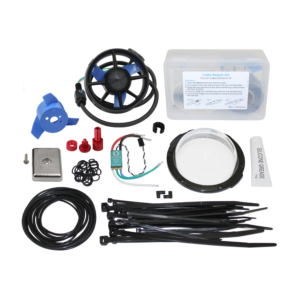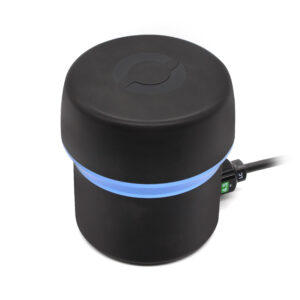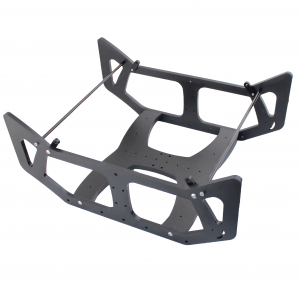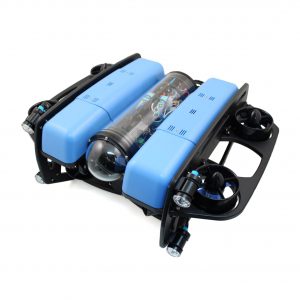The BlueROV2 is controlled by the Navigator Flight Controller and BlueOS. The Navigator is a purpose-built controller for ROVs and other robotic applications that has onboard sensors including an inertial measurement unit (IMU) and magnetometer to measure orientation and compass heading and a leak sensor to alert you of any water ingress. It has 16 outputs that can be connected to thrusters, lights, grippers, and other accessories as well as a number of serial and I2C communication ports to communicate with sensors and sonars. It has plenty of room for expandability!
The Navigator is coupled with a Raspberry Pi 4 computer, which handles all of the processing and computing requirements within the ROV. It runs our open-source BlueOS software that provides the tools and features necessary to operate and expand the vehicle. BlueOS runs the ArduSub vehicle control software, manages the camera and tether connection, and makes it easy to update the software to add new features. BlueOS is a growing project and will continue to provide new features to all BlueROV2s.
At the surface, the pilot controls the ROV through a laptop computer and gamepad controller. The open-source QGroundControl application acts as the user interface, providing the live video stream, sensor feedback and information, and the ability to change settings and configuration.

